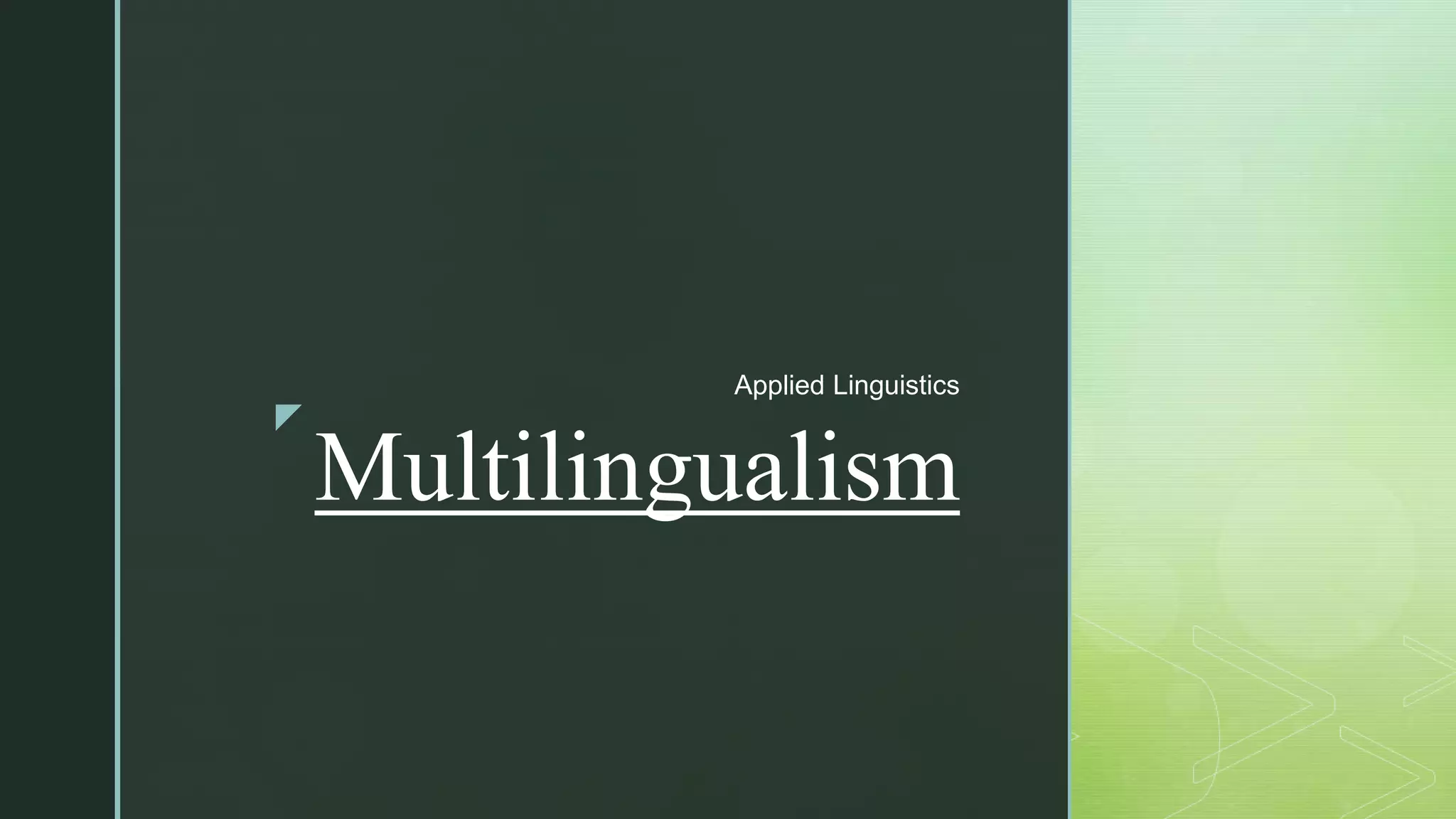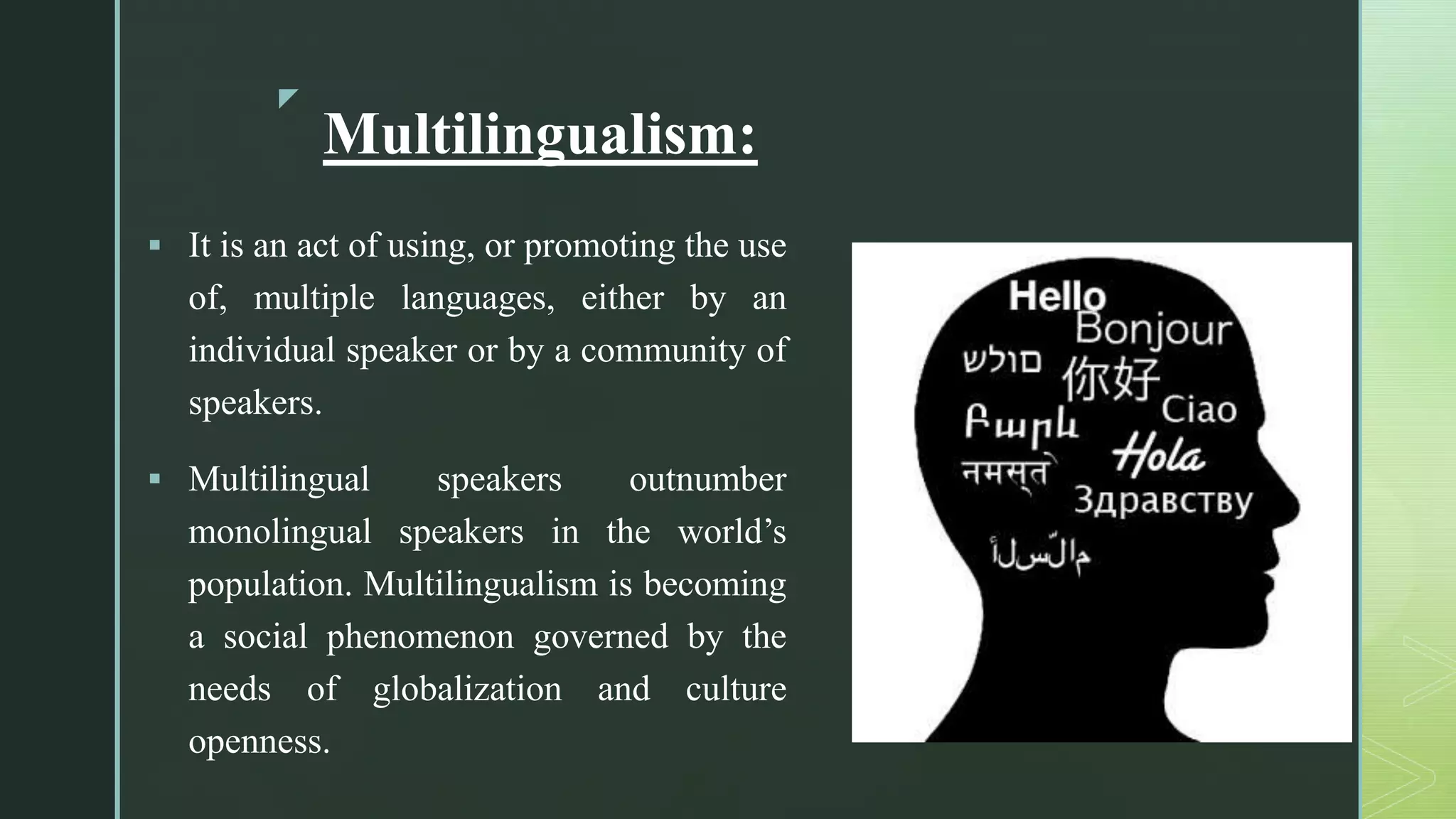This document discusses multilingualism from several perspectives. It begins by defining multilingualism and multilingual speakers. It then discusses what constitutes a multilingual person, including simultaneous and successive acquisition of languages. The document contrasts individual versus societal multilingualism and compares compound and coordinate bilingual speakers. It also addresses models for native language literacy programs and categories of bilingualism such as early versus late and additive versus subtractive. The document concludes by discussing multilingualism within communities in terms of diglossia, ambilingualism and bipart-lingualism.




























